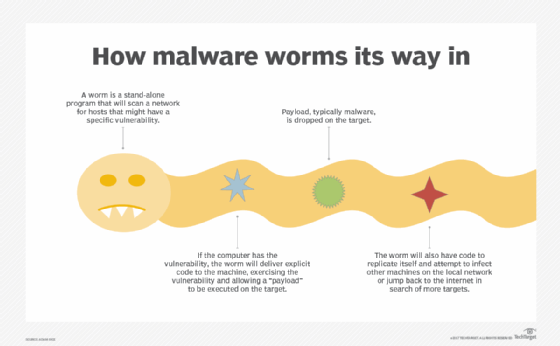
Alex - stock.adobe.com
Why and how to use container malware scanning software
Malware is on the rise, and containers are potential attack vectors. Learn why it's crucial to check containers for vulnerabilities and compare container malware scanning tools.
Containers are a popular way to package software applications and offer many benefits over traditional virtualization techniques. But because containers can encapsulate a complete application environment, they can also contain malware.
Scanning containers for malware is essential to maintaining container safety and the overall security of an IT environment. To support this process, IT pros can use container malware scanning software, a security tool that checks containers for malicious code or activity.
How does malware scanning work?
Container malware scanning software uses either static or dynamic analysis to detect malicious code or activity. Static analysis involves scanning a container image's contents for known indicators of compromise, such as common malware signatures.
Many commercial and open source container security tools offer some form of malware scanning. Organizations can take several approaches to implement this type of security measure. For example, some companies run in-house container scanning tools, while others outsource this function to a third-party service provider. In addition, some organizations deploy container scanning tools as part of their overall application security strategy, while others use them as a standalone security measure.
While container malware scanning is an effective way to improve the security of containerized applications, it's not a silver bullet. Container scanning tools can only detect malicious code or activity already present in a container image -- they cannot prevent malware injection into a container. To comprehensively protect containerized applications, it's crucial to adopt other security measures, such as application firewalls and intrusion detection and prevention systems.
Why is container malware scanning important?
Container malware scanning has several benefits:
- It locates and isolates malicious code and activity within containers, which can prevent damage caused by malware.
- Container malware scanning software monitors and tracks activity within containers to identify potential issues and threats early on.
- Scanning containers for malware helps maintain overall container security, keeping data and applications safe from cyber attacks.

Container malware scanning tools
Reviewing containers and their components for possible security issues is a technique known as container scanning or container image scanning. Container malware scanning tools can also monitor containers for suspicious activity and create a container security profile.
Once you've decided to use container malware scanning software, the next step is to choose a tool that meets your needs. There are many options available, so select one that meets your requirements and is compatible with your OS and container runtime environment.
Anchore
Anchore is a container scanner that integrates with Kubernetes, Docker and OpenShift to automate security scanning. Its key features include the following:
- integration with various CI/CD tools, such as Jenkins and GitLab CI/CD;
- vulnerability analysis and management capabilities; and
- support for multiple container registries, including Docker Hub and Quay.
Clair
Clair is a container scanning and static analysis tool that detects vulnerabilities in container images. Clair is open source and available on GitHub. Clair provides visibility into the security state of a container environment, scanning container images with the aim of discovering any vulnerabilities prior to deployment.
Clair scans images for security risks, including potential vulnerabilities to privilege escalation attacks. The tool also detects insecure configurations, such as listening ports without any corresponding firewall rules.
Dagda
Dagda is a container scanning tool that analyzes a container's security state. Dagda supports static analysis of known threats such as malware, viruses and Trojans in Docker images and containers and can provide comprehensive reports on application security.
Falco
Falco is a runtime security tool that detects abnormal behavior in Kubernetes hosts and containers. It scans containers for known vulnerabilities, checks them for potential dangers and ensures they are updated. Falco identifies risks in real time by analyzing the behavior of apps and containers and can inform IT teams as needed.
Aqua
Aqua is a cloud-based container security tool that uses machine learning techniques to scan containers, identify potential threats and notify users. Aqua's key features include the following:
- scanning container images for vulnerabilities, including known and unknown threats;
- integration with popular CI/CD tools, such as Jenkins and GitLab;
- insights into containers' potential risks that IT teams can use to support decision-making; and
- automated remediation of existing containers with known vulnerabilities.
Adopting container malware scanning software
When choosing a container malware scanning tool, keep a few points in mind. First, ensure the software is compatible with the type of containers your environment uses. Second, select software with reasonable detection rates, verified by independent reviews.
Once you've chosen the software, implement it in your environment. This usually involves installing the software on host machines and configuring it to scan containers.








